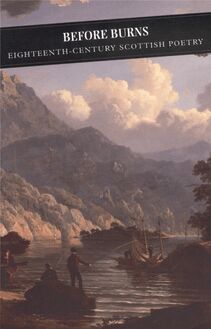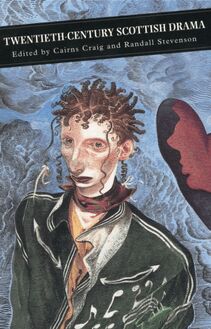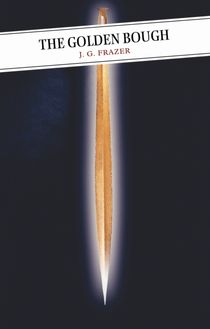-
 Univers
Univers
-
 Ebooks
Ebooks
-
 Livres audio
Livres audio
-
 Presse
Presse
-
 Podcasts
Podcasts
-
 BD
BD
-
 Documents
Documents
-
- Cours
- Révisions
- Ressources pédagogiques
- Sciences de l’éducation
- Manuels scolaires
- Langues
- Travaux de classe
- Annales de BEP
- Etudes supérieures
- Maternelle et primaire
- Fiches de lecture
- Orientation scolaire
- Méthodologie
- Corrigés de devoir
- Annales d’examens et concours
- Annales du bac
- Annales du brevet
- Rapports de stage
La lecture à portée de main
Vous pourrez modifier la taille du texte de cet ouvrage
Découvre YouScribe en t'inscrivant gratuitement
Je m'inscrisDécouvre YouScribe en t'inscrivant gratuitement
Je m'inscrisEn savoir plus
Vous pourrez modifier la taille du texte de cet ouvrage
En savoir plus

Description
Informations
| Publié par | Canongate Books |
| Date de parution | 01 juillet 2010 |
| Nombre de lectures | 0 |
| EAN13 | 9781847674746 |
| Langue | English |
Informations légales : prix de location à la page 0,0520€. Cette information est donnée uniquement à titre indicatif conformément à la législation en vigueur.
Extrait
Twentieth-Century Scottish Drama
An Anthology
Edited and Introduced by
Cairns Craig and Randall Stevenson
Contents
Introduction
Mary Rose
J.M. Barrie
In Time o’ Strife
Joe Corrie
Jamie the Saxt
Robert McLellan
Mr Bolfry
James Bridie
Men Should Weep
Ena Lamont Stewart
The Bevellers
Roddy McMillan
The Jesuit
Donald Campbell
Mary Queen of Scots Got Her Head Chopped Off
Liz Lochhead
Your Cheatin’ Heart
John Byrne
Bondagers
Sue Glover
Shining Souls
Chris Hannan
Copyright Permissions
Introduction
Scottish literature has often been seen as significantly weakened by the lack of a strong native tradition of drama. Isolated works of great power, such as David Lindsay’s Ane Satyre of the Thrie Estaitis (1554) point towards how much was lost when the Court of James VI moved to London to preside over the glories of English Jacobean theatre, leaving the Reformed Church seeking to suppress all dramatic performances in Scotland on the grounds that they were inherently evil. Theatrical art in Scotland long continued to struggle against the censures of Calvinism: formal theatre was often a private rather than a public event, and it was not until the eighteenth century that permanent playhouses were established. Even in the mid-eighteenth century the enormous success of John Home’s Douglas (1756) which some believed had given Scotland an equivalent of Shakespeare’s work was met with a torrent of criticism from the Church, especially since Home himself was a clergyman.
Douglas , however, did initiate a taste for Scottish historical drama further encouraged by Macpherson’s Ossian in the 1760s, and by the plays of Joanna Baillie in the 1790s. The Family Legend , her dark tale of Highland intrigue and violence was produced at the Theatre Royal in Edinburgh in 1811, under the guidance of Walter Scott, and it was Scott who went on to dominate nineteenth-century theatre through adaptations of his novels: plays based on his works formed the backbone of a flourishing theatrical culture in Scotland down to the 1880s. Adaptations of Guy Manneringy Rob Roy, The Heart of Mid-Lothian , and The Bride of Lammermoor , together with plays based on Ossian and on historical figures such as William Wallace and Bonnie Prince Charlie constituted a National Drama which exercised a powerful influence on nineteenth-century Scottish culture in general.
It was, however, a drama largely without dramatists. In the late nineteenth century, the music-hall and variety provided alternative forms of entertainment whose broader popularity encouraged the building of more and grander theatres, but still without much encouraging native drama. Any conventional dramatic performances mounted in the new theatres generally took the form of touring productions sent round the country by London-based managements: any Scottish component survived almost entirely in the form of pantomime. As Bill Findlay’s History of Scottish Theatre (1998) shows, traditions of Scottish theatre, before the twentieth century, were never as weak as some critics have suggested, yet it was often a theatre centred on spectacle and performance rather than on playwrights and developing dramatic styles. Scottish drama entered the early years of the twentieth century with no strong place in the Scottish culture which was beginning to reshape itself at this time. Significantly, the first major Scottish dramatist of the new century, J. M. Barrie, had all his plays produced in London and New York.
Until the Second World War, serious theatre in Scotland remained almost entirely a matter of short-lived professional organisations and long-running amateur groups. The example of the Abbey Theatre in Dublin encouraged both the Scottish Repertory Theatre in Glasgow in the years before the First World War an early inspiration for James Bridie and the establishment in the 1920s of the Scottish National Players, who organised regular seasons in Glasgow and tours of the Scottish regions. With work by Robert Bain, John Brandane and Joe Corrie, the Players did much to fulfil their commitment ‘to develop Scottish national drama through … plays of Scottish life and character’, their influence sometimes extended by the direct transfer of some productions for radio broadcasting in the early days of BBC Scotland. They remained, however, an amateur or at most semi-professional organisation. It was not until the establishment of the Citizens’ Theatre in 1943, under the guidance of O. H. Mavor (‘James Bridie’), and its move to a permanent site in the Gorbals in 1945, financed by the industrialist Sir Frederick Stewart, that a reliable stage was set up for the skills of Scottish dramatists and actors ones further encouraged, in the latter case, by the foundation of the Royal Scottish Academy of Music and Drama, also with Bridie’s help, in 1950.
Between the wars, Scottish theatre was dominated by the Scottish Community Drama Association and the various groups which it spawned. The SCDA’s annual festival of one-act plays attracting over 300 entries in 1926, only four years after its foundation was the highlight of the amateur season, and did allow Scottish dramatists to reach a wide audience. Yet the styles required for amateur performance could be destructive of serious talent. Writers such as Joe Come whose plays sometimes came first, second and third in SCDA festivals and T. M. Weston found that they could earn a living by turning out what David Hutchison has described as ‘amusing but empty Scottish comedies’, full of ‘facile humour and neat solutions’. Nevertheless, the amateur movement did provide a pool of actors accustomed to the presentation of Scots character: without it, great performers such as Roddy McMillan or Duncan Macrae (who played the lead role in the first, amateur production of Jamie the Saxt , 1937) might not have found a way onto the stage.
The most significant development from the amateur movement, however, was the Glasgow-based Unity Theatre company. Unity combined an amateur base with a small team of professionals including Roddy McMillan and encouraged Scottish drama dealing directly with contemporary urban society, rather than the rural life often favoured by the Scottish National Players. Plays such as Robert McLeish’s The Gorbals Story (1946), depicting the consequences of the post-war housing shortage, and Ena Lamont Stewart’s presentation of unemployment in Men Should Weep (1947) illustrated the belief emphasised in the company’s manifesto, drawn from the Russian writer Maxim Gorki: that ‘the theatre is the school of the people it makes them think and it makes them feel’. Unity’s example both encouraged a long line of Scottish companies, such as 7:84 and Wildcat, combining theatrical innovation with a strong political message, and helped establish a style of realistic drama including Roddy McMillan’s All in Good Faith (1954) and The Bevellers (1973) depicting the harsh realities of working life, in the west of Scotland particularly. Like many of its successors, Unity was also to run foul of the Arts Council, which had provided some of its early funding, and the company had to cease work in the early 1950s. By then, however, it had helped initiate the Edinburgh Festival Fringe by putting on plays without official support at the first Edinburgh Festival in 1947.
Begun with the intention of helping international relations in the aftermath of the war, the Edinburgh International Festival was to have a key role in the development both of theatre in Scotland and of the work of Scottish playwrights, one sustained throughout the latter half of the century. The Festival brought the new theatrical styles of post-war Europe and the United States to Scotland, allowing dramatists and actors access to an international culture from which Britain had been largely cut off since the Depression of the 1930s. It also provided a venue in which significant audiences and serious critical attention could sometimes be directed on Scottish drama in particular, in the first festivals, through the ground-breaking production of Lindsay’s Ane Satyre of the Thrie Estaitis by the American director Tyrone Guthrie. Regularly revived in the following half-century. Lindsay’s play was performed, in Guthrie’s staging, in the open theatrical space of the Assembly Hall of the Church of Scotland. Given the Kirk’s centuries-old suspicion of drama, the setting was ironic: symbolic, too, of the extent to which theatre was to take the place of the church as an arena of public debate or at any rate to benefit from a more liberated climate in the years of declining religious faith which followed.
Practically, because it had been designed for debate rather than as an acting chamber, the Assembly Hall posed immediate theatrical problems, solved by Guthrie’s reinvention of the Elizabethan thrust stage, jutting out among the spectators so that the actors are surrounded by the audience. Involving the audience much more immediately than a proscenium stage, his tactics set a pattern regularly followed by later Scottish theatre, often drawing its spectators into close complicity with performers through shared outlooks or simple physical proximity. Such tactics were followed by 7:84 in their their ‘ceilidh house’ style of theatre. In other ways, they were also very influentially sustained by a new theatre spawned by the Edinburgh Festival and the ‘alternative’ styles of its Fringe the Traverse, opened in a tiny room in a former brothel in the High Street in 1963, before moving on to more permanent bases in the Grassmarket and Cambridge Street. Virtually the first professional studio space in Britain, the Traverse quickly influenced theatre and theatre architecture throughout the world, while its commitment to staging new plays, local ones particularly, was crucial to the development of theatre within Scotland in the last decades of the centu
-
 Univers
Univers
-
 Ebooks
Ebooks
-
 Livres audio
Livres audio
-
 Presse
Presse
-
 Podcasts
Podcasts
-
 BD
BD
-
 Documents
Documents
-
Jeunesse
-
Littérature
-
Ressources professionnelles
-
Santé et bien-être
-
Savoirs
-
Education
-
Loisirs et hobbies
-
Art, musique et cinéma
-
Actualité et débat de société
-
Jeunesse
-
Littérature
-
Ressources professionnelles
-
Santé et bien-être
-
Savoirs
-
Education
-
Loisirs et hobbies
-
Art, musique et cinéma
-
Actualité et débat de société
-
Actualités
-
Lifestyle
-
Presse jeunesse
-
Presse professionnelle
-
Pratique
-
Presse sportive
-
Presse internationale
-
Culture & Médias
-
Action et Aventures
-
Science-fiction et Fantasy
-
Société
-
Jeunesse
-
Littérature
-
Ressources professionnelles
-
Santé et bien-être
-
Savoirs
-
Education
-
Loisirs et hobbies
-
Art, musique et cinéma
-
Actualité et débat de société
- Cours
- Révisions
- Ressources pédagogiques
- Sciences de l’éducation
- Manuels scolaires
- Langues
- Travaux de classe
- Annales de BEP
- Etudes supérieures
- Maternelle et primaire
- Fiches de lecture
- Orientation scolaire
- Méthodologie
- Corrigés de devoir
- Annales d’examens et concours
- Annales du bac
- Annales du brevet
- Rapports de stage















